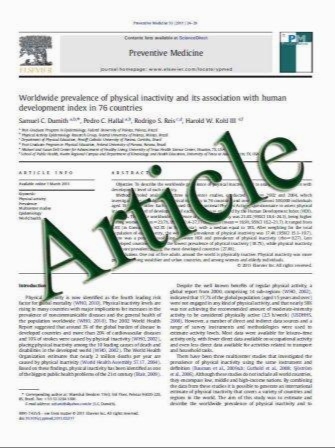Spontaneous skin regression and predictors of skin regression in Thai scleroderma patients
- نوع فایل : کتاب
- زبان : انگلیسی
- مؤلف : Chingching Foocharoen & Ajanee Mahakkanukrauh & Siraphop Suwannaroj & Ratanavadee Nanagara
- چاپ و سال / کشور: 2011
Description
Skin tightness is a major clinical manifestation of systemic sclerosis (SSc). Importantly for both clinicians and patients, spontaneous regression of the fibrosis process has been documented. The purpose of this study is to identify the incidence and related clinical characteristics of spontaneous regression among Thai SSc patients. A historical cohort with 4 years of follow-up was performed among SSc patients over 15 years of age diagnosed with SSc between January 1, 2005 and December 31, 2006 in Khon Kaen, Thailand. The start date was the date of the first symptom and the end date was the date of the skin score .2. To estimate the respective probability of regression and to assess the associated factors, the Kaplan.Meier method and Cox regression analysis was used. One hundred seventeen cases of SSc were included with a female to male ratio of 1.5:1. Thirteen patients (11.1%) experienced regression. The incidence rate of spontaneous skin regression was 0.31 per 100 person-months and the average duration of SSc at the time of regression was 35.9پ}15.6 months (range, 15.7. 60 months). The factors that negatively correlated with regression were (a) diffuse cutaneous type, (b) Raynaudپfs phenomenon, (c) esophageal dysmotility, and (d) colchicine treatment at onset with a respective hazard ratio (HR) of 0.19, 0.19, 0.26, and 0.20. By contrast, the factor that positively correlated with regression was active alveolitis with cyclophosphamide therapy at onset with an HR of 4.23 (95% CI, 1.23.14.10). After regression analysis, only Raynaudپfs phenomenon at onset and diffuse cutaneous type had a significantly negative correlation to regression. A spontaneous regression of the skin fibrosis process was not uncommon among Thai SSc patients. The factors suggesting a poor predictor for cutaneous manifestation were Raynaudپfs phenomenon, diffuse cutaneous type while early cyclophosphamide therapy might be related to a better skin outcome.
Clin Rheumatol Received: 30 December 2010 / Revised: 21 March 2011 / Accepted: 24 March 2011


